The new year 2024 demands a new guide on how to install WordPress on GoDaddy from scratch, doesn’t it?
We have written the best guide — each step has a screenshot to make it incredibly easy to understand the whole process.
And the best part?
I’ll also explain how to install SSL on your GoDaddy WordPress hosting for FREE, saving you $40, right after you install WordPress on GoDaddy.
First, we talk about the basics. Skip the part if you already know.
TL;DR:
Learn how to install WordPress on GoDaddy step-by-step, whether you're using web hosting or cPanel. This guide also shows how to install a free SSL certificate using Cloudflare, saving you $40. Perfect for beginners, with screenshots and detailed instructions to get your site live and secure.
What is Goddady Hosting?
GoDaddy Hosting is a web hosting company that offers a variety of services such as domain registration, website building tools, and online marketing. Their plans are customizable and include options for small businesses and individuals.
It's one of the most popular hosting providers on the market. They offer a wide variety of plans, including shared hosting, VPS hosting, and dedicated servers. They also offer a variety of features, such as unlimited storage and bandwidth, a free domain name, and more. If you plan to install WordPress on GoDaddy, you’ll benefit from features such as unlimited storage and bandwidth, a free domain name, and more.
When setting up your WordPress site, it’s also smart to think about how you’ll manage collaboration and client feedback later on. Using tools to collect visual feedback can streamline your website review process, especially when working with designers or clients who want to comment directly on your live site.
In addition to their hosting services, Goddady also offers SSL certificates, which are necessary for e-commerce websites. They have a customer service team that is available 24/7 to help with any issues you may encounter. If you're looking for a reliable, affordable hosting company, Goddady is a good option.
Goddady offers different kinds of hosting services like:
- Web Hosting is the term of shared hosting on GoDaddy where you share resources with other website owners. It’s cheap but not effective since your website can go down anytime if one website uses all the resources, but you can still install WordPress on GoDaddy using this plan.
- Business Hosting is hosting VPS where you can control all the servers’ resources, but you don’t need to maintain it — updating and patching it.
- Reseller Hosting is for the people who want to sell GoDaddy’s hosting to others but with white-label service, meaning to use it as their brands. You buy it in bulk to get a big discount and earn a profit.
- WordPress Hosting is used for hosting WordPress websites. By the way, you can also host WordPress on Web Hosting. Still, it comes up with additional benefits like automatic WordPress core software and security updates, the latest PHP 7, one-click migration tool, and makes it even easier to install WordPress on GoDaddy.
- WordPress Ecommerce Hosting is used to run an online store on WordPress. It makes it different to offer free Woocommerce extensions worth more than $3000.
- VPS Hosting is meant for developers who love to have complete control over the server to manage their websites.
- Dedicated Servers are the most expensive type of hosting since you own a server, and the performance is the best among all.
Don’t worry!
No matter the kind of hosting you use, you can use the below ways to install WordPress on GoDaddy easily.
Way 1 - When You Purchase a New Hosting Plan
The steps mentioned below apply to Web Hosting’s newly purchased hosting plan f Web Hosting from GoDaddy.
You don’t need to perform it on the WordPress Hosting plan. In order to install WordPress on your other new sites, follow the Way 2.
Step 1: Sign in to GoDaddy Account
The first step is pretty simple, sign in to your GoDaddy account.
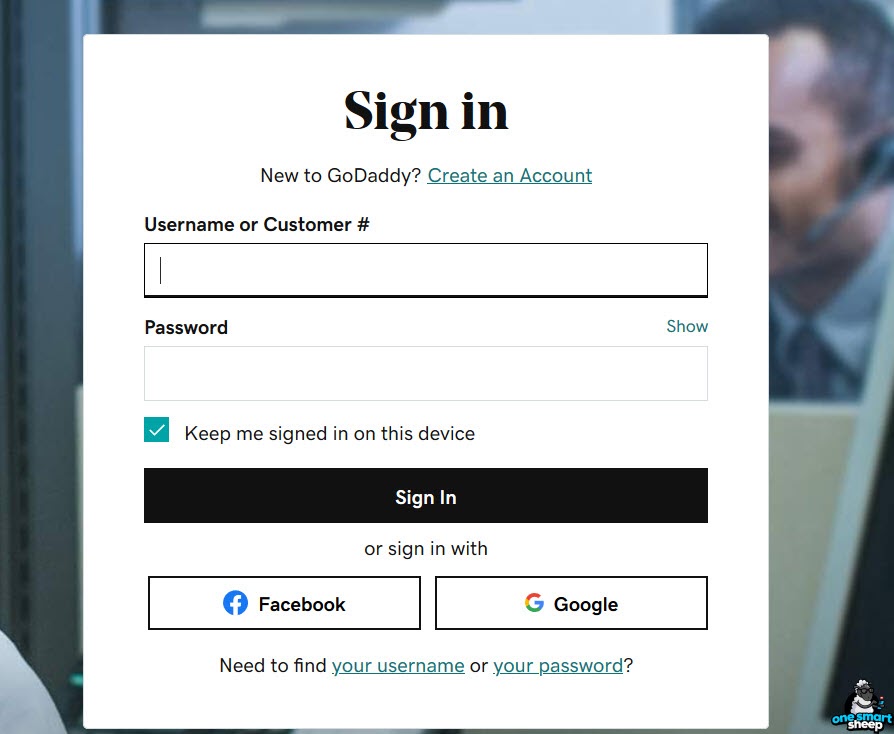
Step 2: My Products
At the top right corner, click on your name and go to My Account.
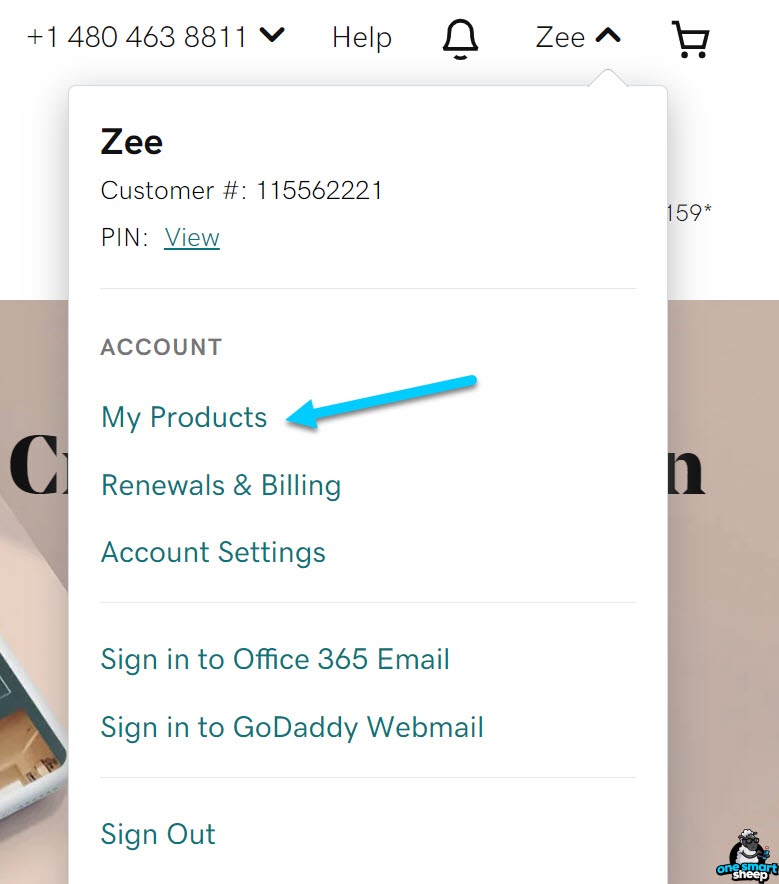
Step 3: Set up
After a second, click the button, “Set up.”

Step 4: Enter the Domain Name
Enter your domain name where you desire to install WordPress.

Step 5: Select Data Center
It’s crucial to select the data center where your customers are located. I chose North America since my business is based in the USA.
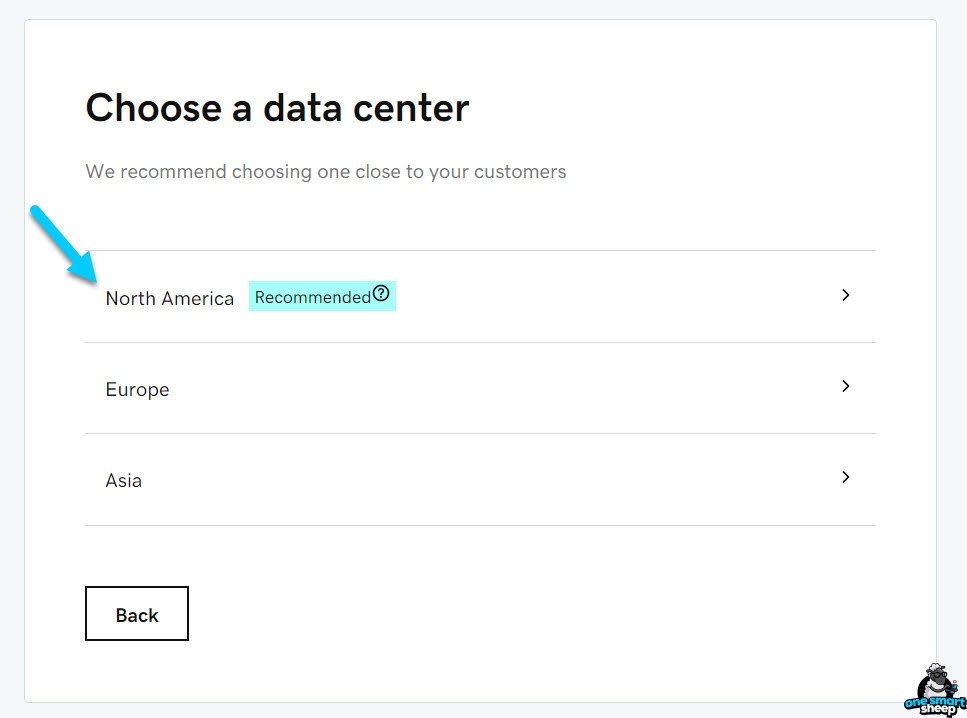
Step 6: Create a WordPress
After a moment, a new window appears. Click “Yes, let’s do it” in order to install WordPress on GoDaddy.
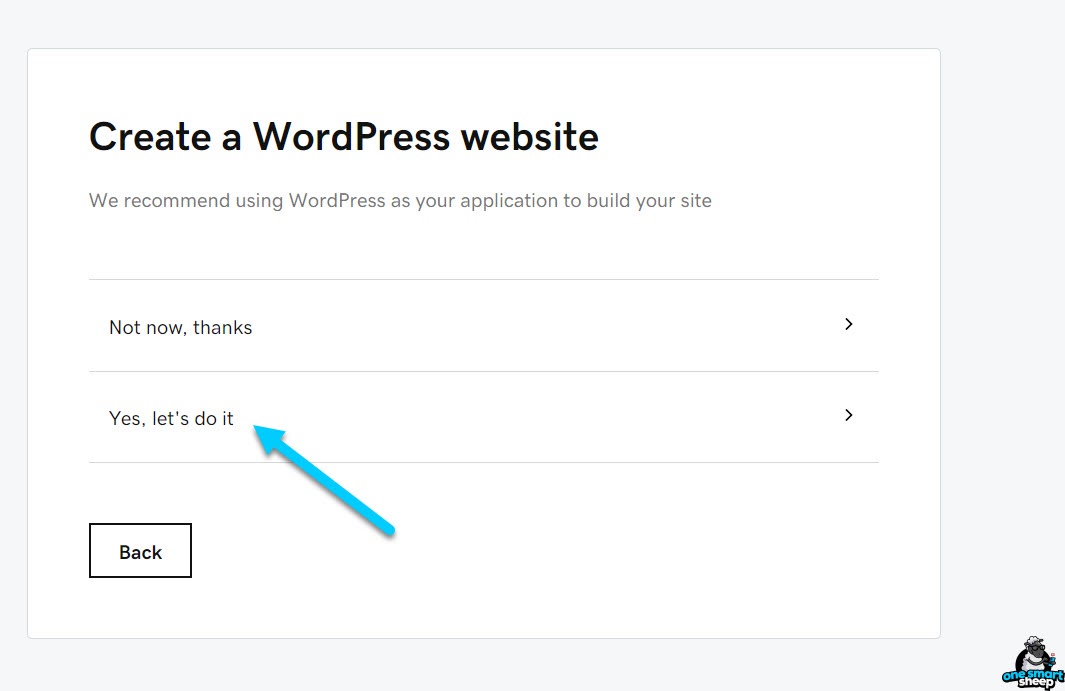
Step 7: Create a WordPress User
Create a WordPress user account by using your username and password.
Note: Keep your confidential information in a safe location. I’ll recommend using Evernote.

Step 8: Wait a Bit
Wait a few seconds until the progress bar disappears.

Step 9 - DNS Records
You don’t need to overthink it. Just click, “I’m done, continue setup.”

Step 10 - Onboarding completed successfully!
On the next screen, click “Go to Dashboard.”

Step 11 - Getting an Error
Nope, it’s not done yet.
It happens when you own a domain from another registrar. You might not need to perform this step if you own a domain from Goddady.
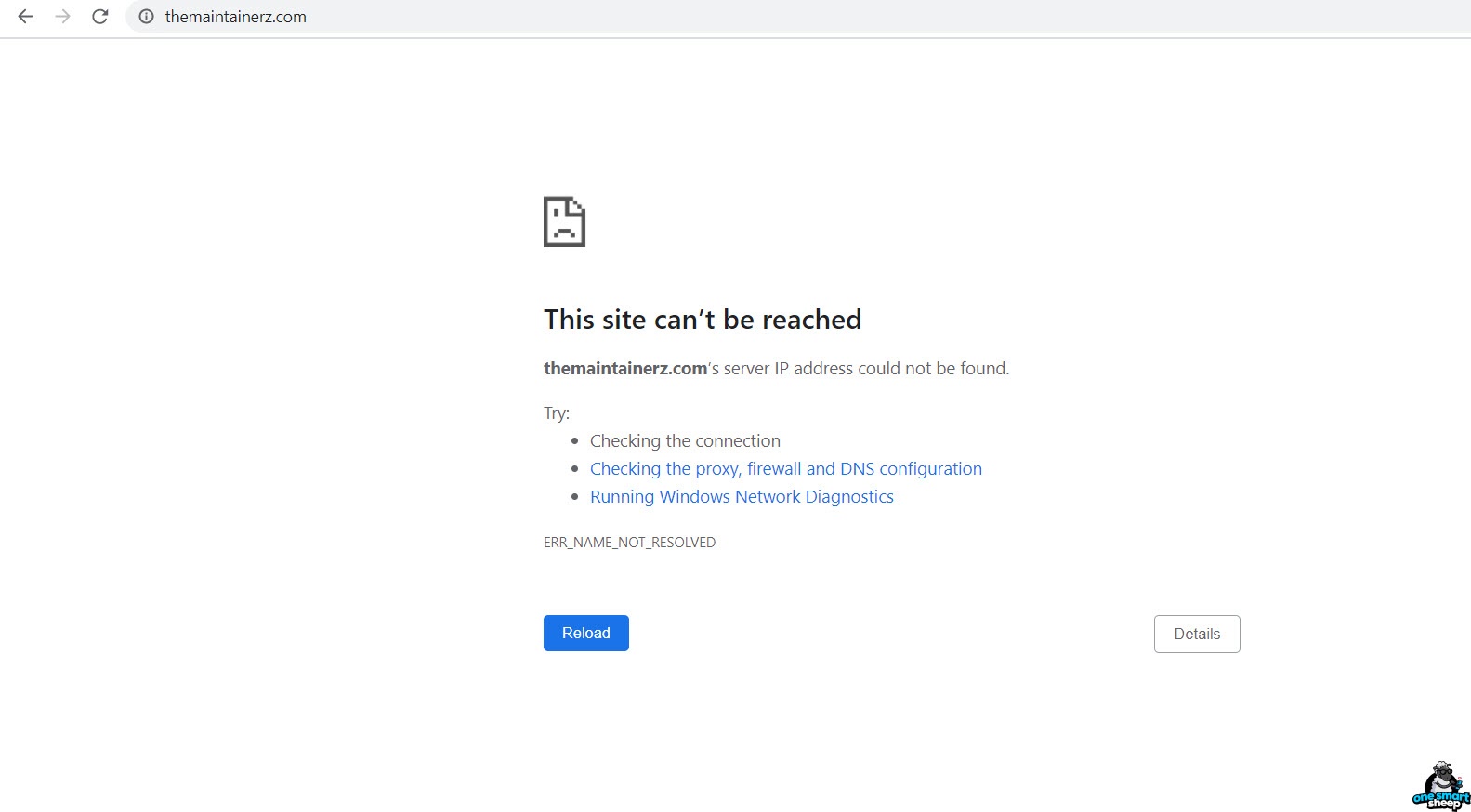
Step 12 - Domain Management
In order to solve this problem, you should put the nameservers of GoDaddy to your domain registrar.
Don’t worry; I’ll show you how to find your hosting’s GoDaddy name servers.
Go to Domain Management > DNS > Manage DNSSEC DS Records.
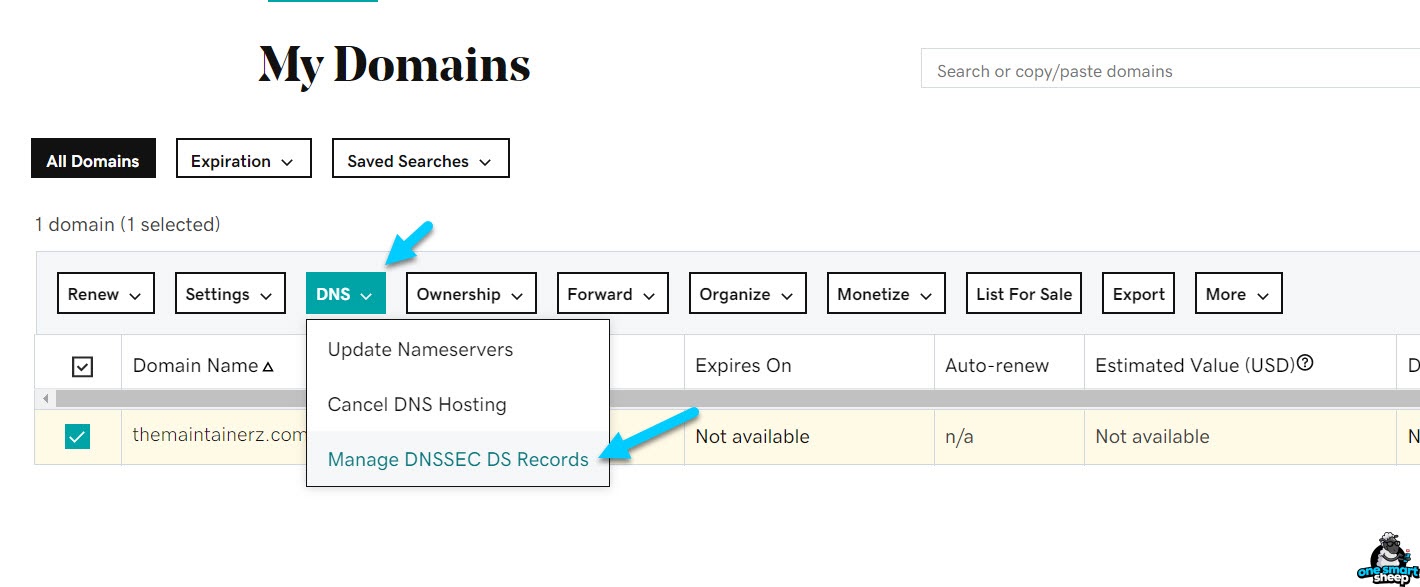
Step 13 - Copy the name servers.
GoDaddy has no fixed name servers like other hostings. So copy the two NS records as shown below.
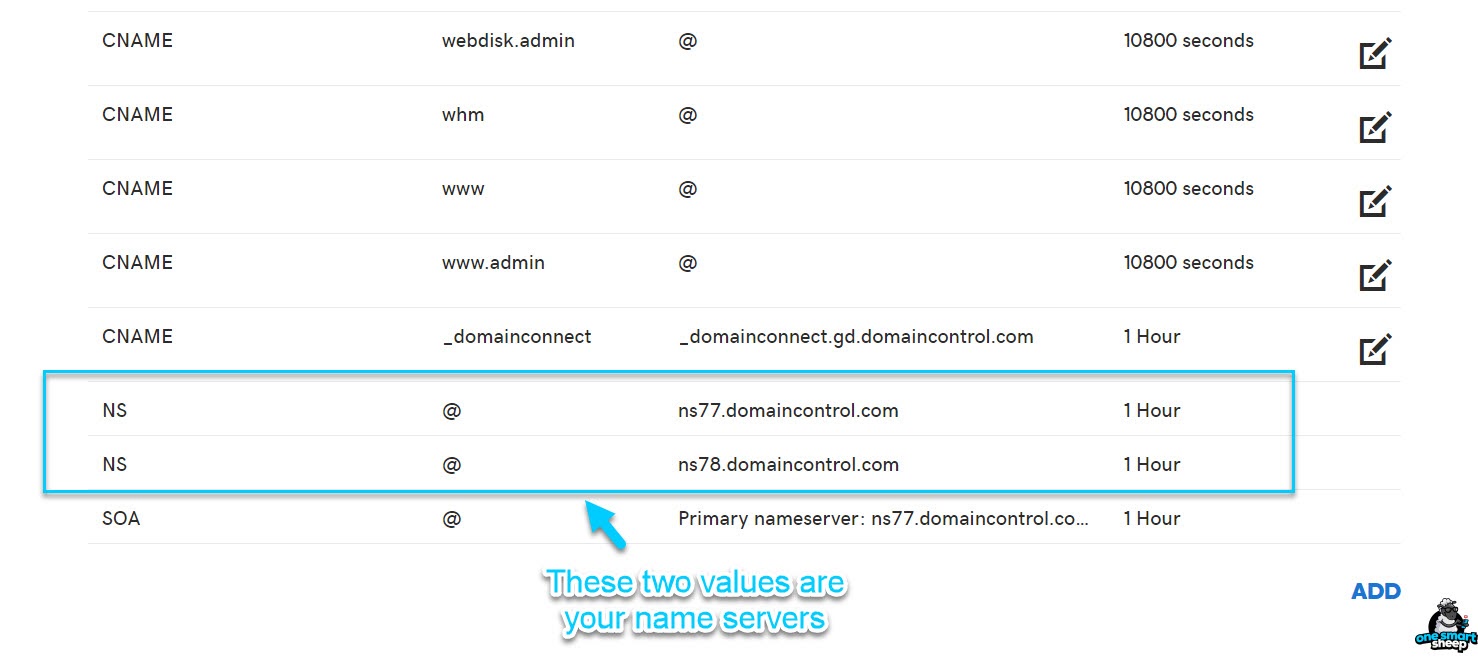
Step 14 - Put Into the Namechea’s DNS
Depending on the domain registrar you own, you need to put the nameservers you copied from the DNS Management from GoDaddy and paste them to the Namecheap’s Name Servers.
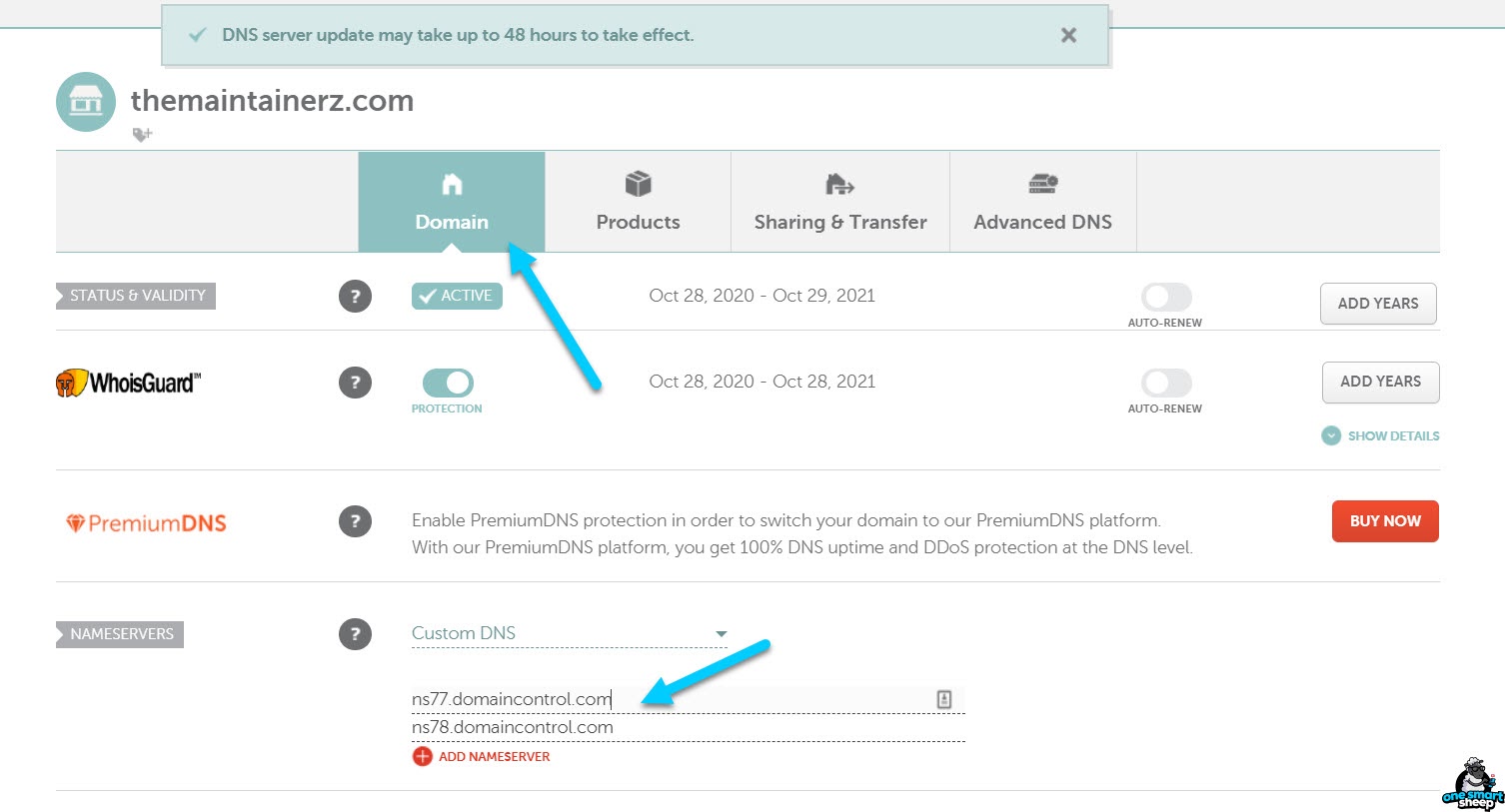
You might have another domain registrar; the principle remains the same.
Step 15 - Wait for DNS Propagation
I have seen people who start screaming when they see the error after the above step.

Folks! You need to wait a few hours until your new domain’s DNS is propagated throughout the world.
But what is DNS propagation? In a nutshell, in order to propagate your domain name across the internet, DNS changes require time.

Step 16 - Take a Look at the Installed WordPress
After you have waited, refresh your website to see if you have successfully managed to install WordPress on GoDaddy.
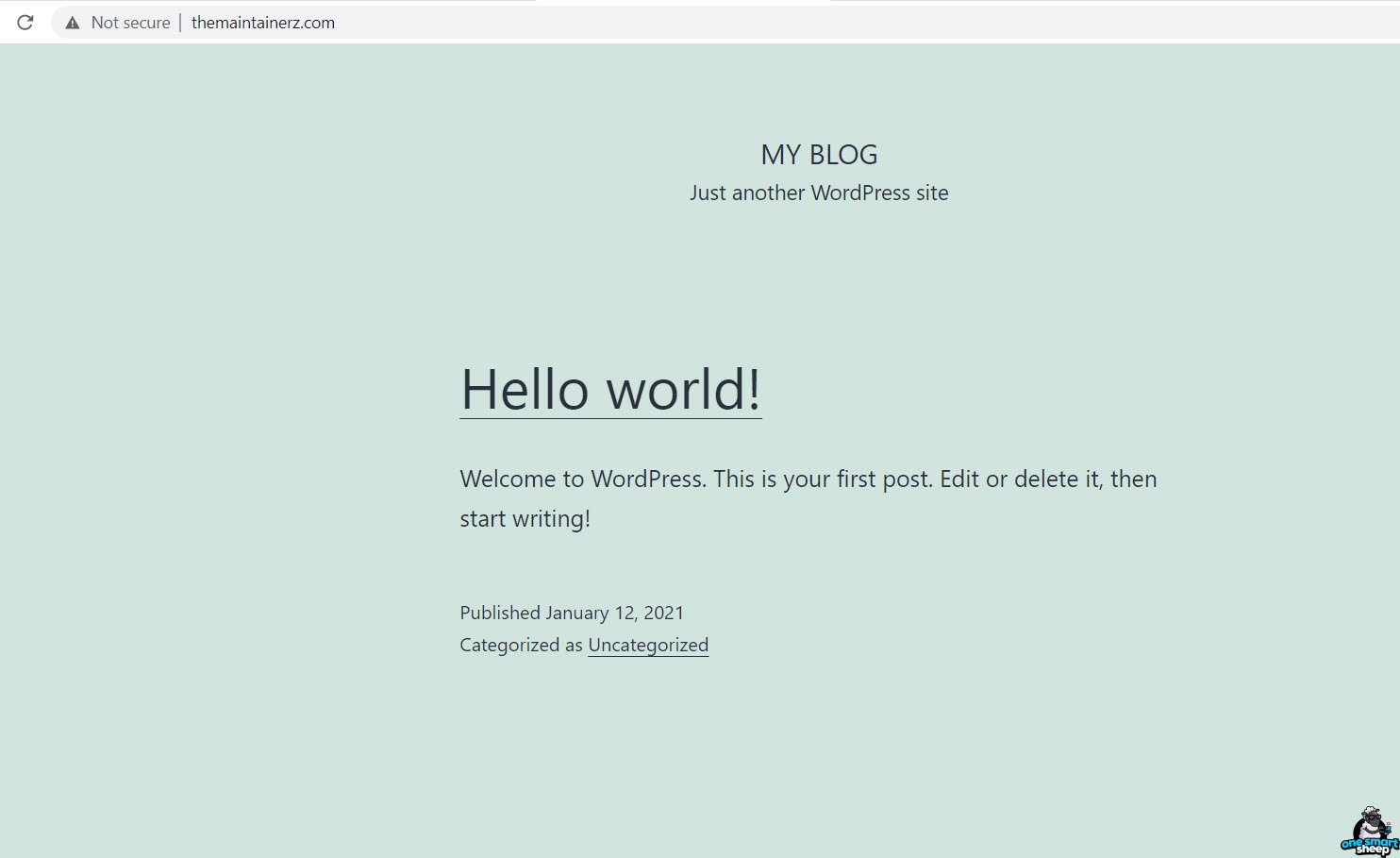
Step 17 - Login to Your WordPress
In order to login to WordPress, put /login at the end of your domain name. For example, example.com/login. Type your username and password you created in Step 7.
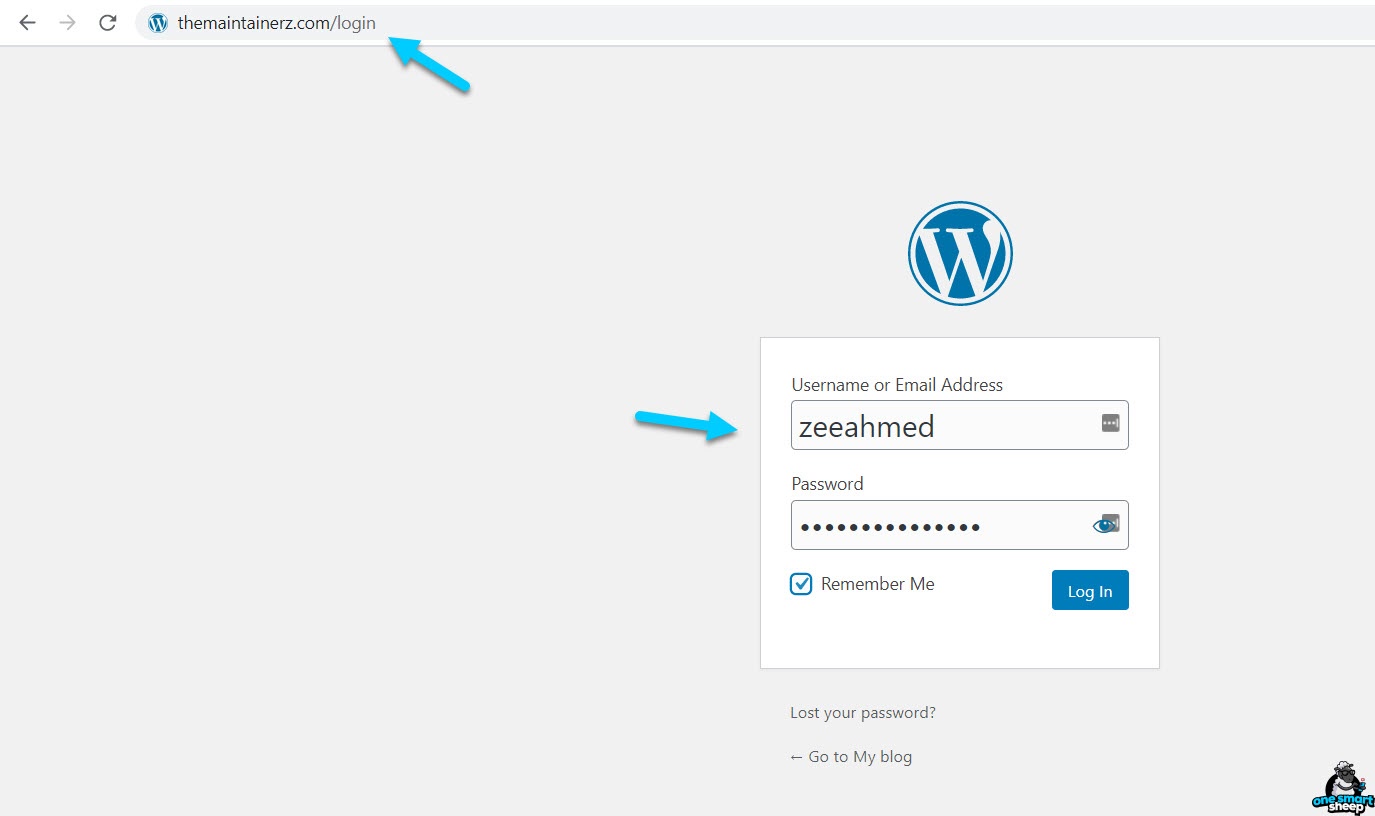
Step 18 - Back to WordPress Dashboard
You can select any starter template, but if you’re interested in purchasing a WordPress theme, you should click “Exit to WordPress Dashboard.”
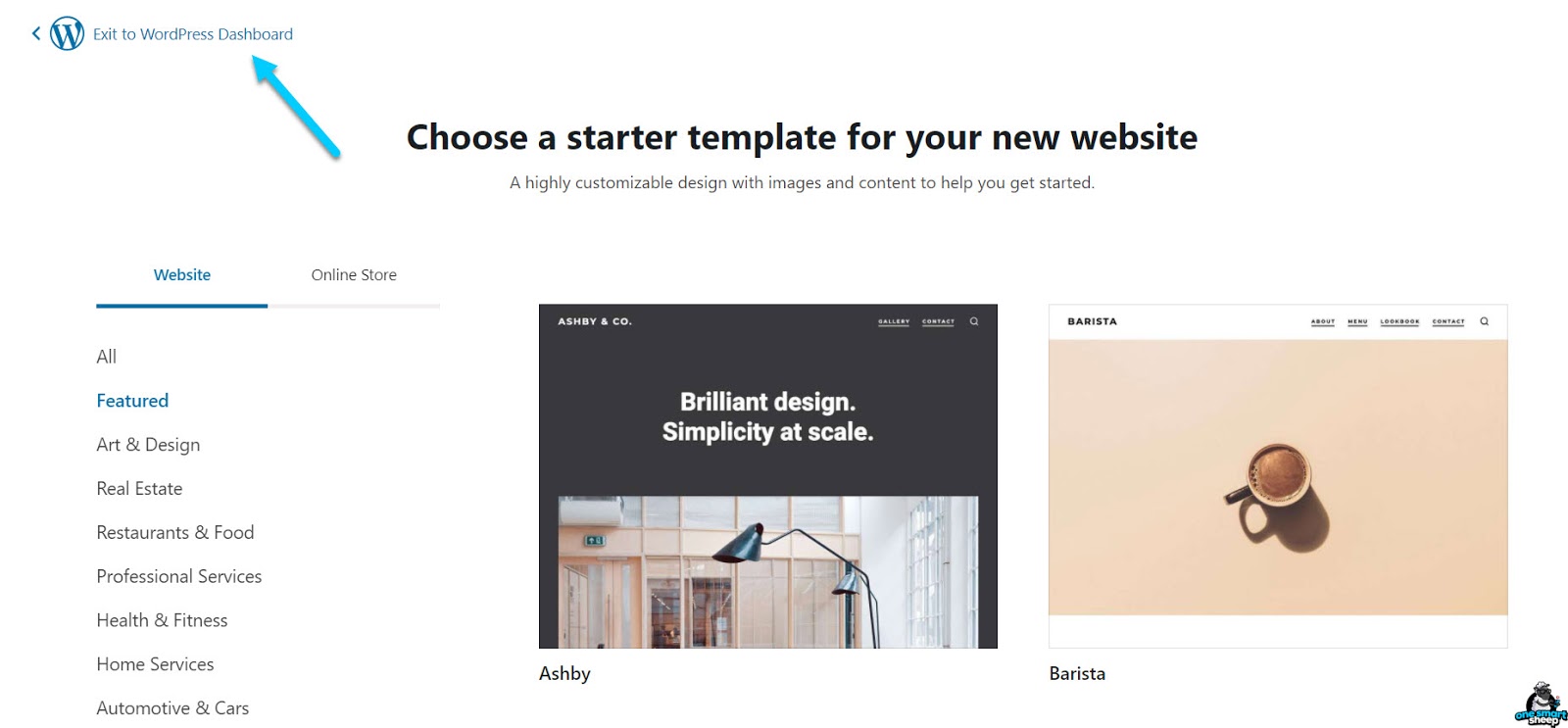
Step 19 - Updates WordPress Plugins and Themes
Go to Updates and update everything. It’s a good practice to keep your WordPress updated.

Way 2 - Installing WordPress Manually on GoDaddy via cPanel
cPanel is a web hosting control panel that provides a graphical interface and automation tools designed to simplify the process of hosting a website.
I’ll explain the manual way to install WordPress on any domain using your GoDaddy hosting with cPanel.
Step 1 - Go back to Manage.
Sign in to your GoDaddy, and go to My Account. Click Manage.
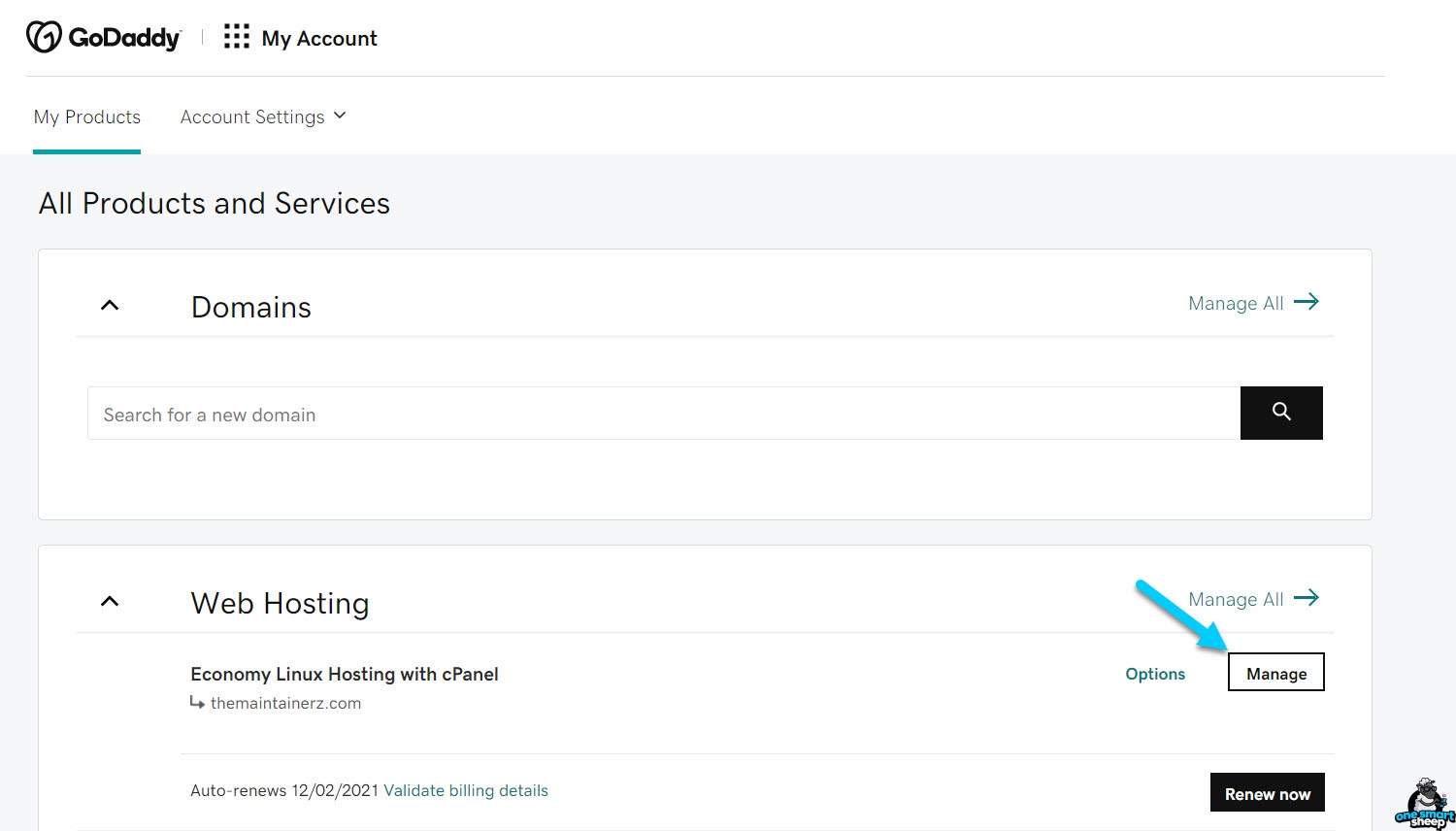
Step 2 - cPanel
Hit the black button named cPanel Admin.

Step 3 - Navigate to WordPress
Scroll down and navigate to WordPress that falls under “Web Applications.”

Step 4 - Install the Application
Have a look at a small button “+ Install this application” and click it to install WordPress on GoDaddy.

Step 5 - Select HTTPS
Select the HTTPS version of your website.
I know, I know.
You might have a hosting plan that doesn’t support SSL. But don’t worry, I purchased the cheapest plan of GoDaddy to show you how you can install SSL later in this tutorial.

Step 5 - Note Down the Username and Password
In order to sign in to your WordPress website, you need to create a username and a password.
Keep in mind that it should be strong enough because WordPress is among the most popular platforms that hackers love to hack.
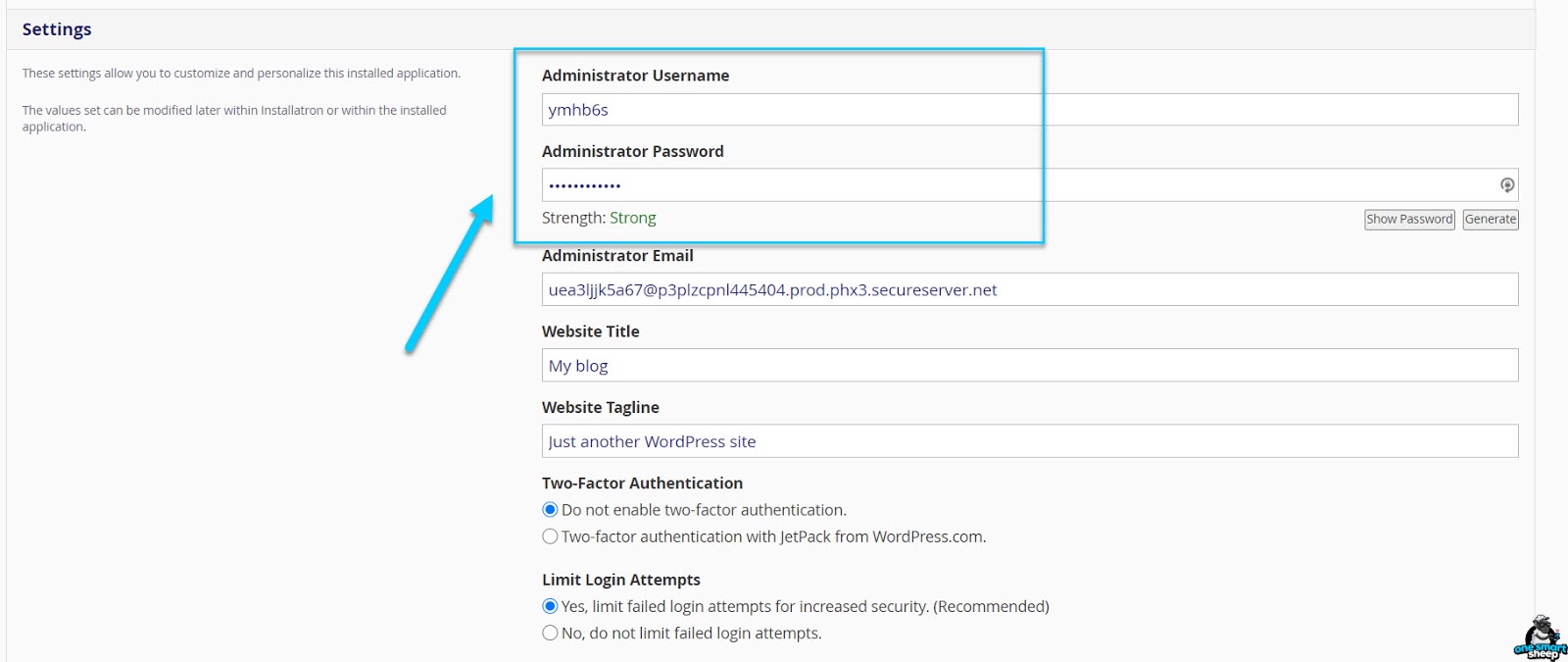
Step 6 - Install WordPress
Click “+ Install.” It takes a few seconds to complete the installation.

Step 7 - Login to WordPress
Once it’s completed, login to your WordPress. Select the second link that ends in /wp-admin.
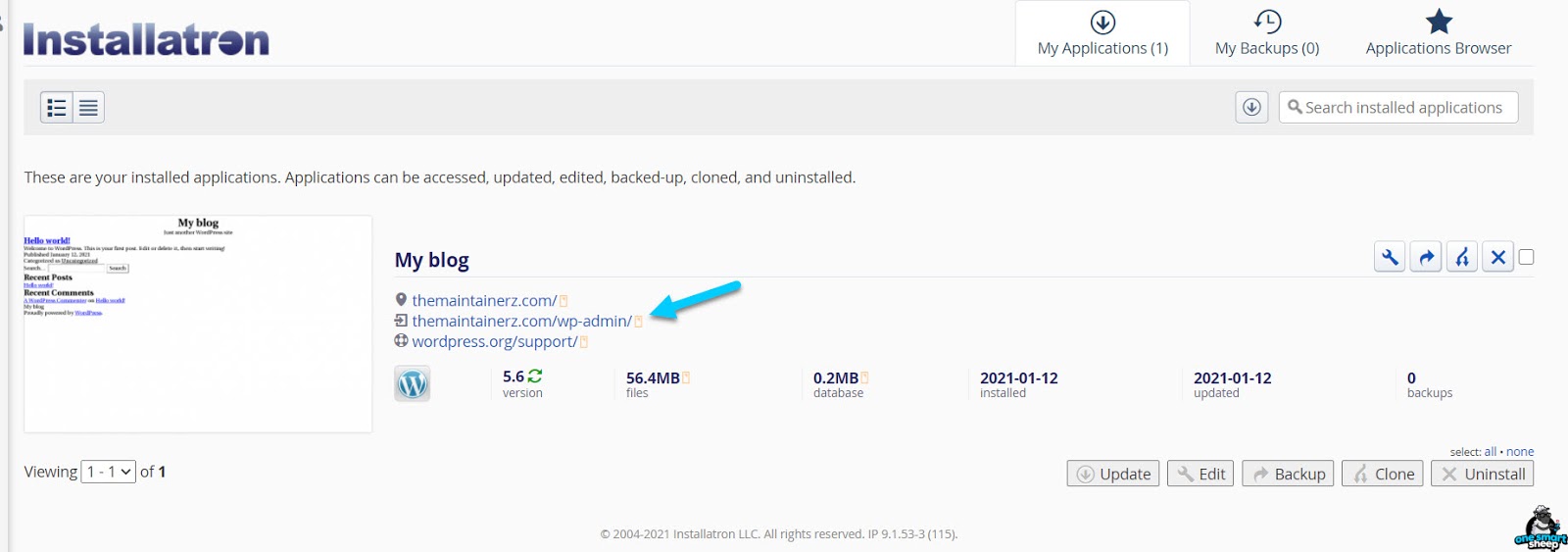
Step 8 - Go Back to Dashboard
If you’re interested in installing a theme, you can select among the list. If not, click “Exit to WordPress Dashboard.”
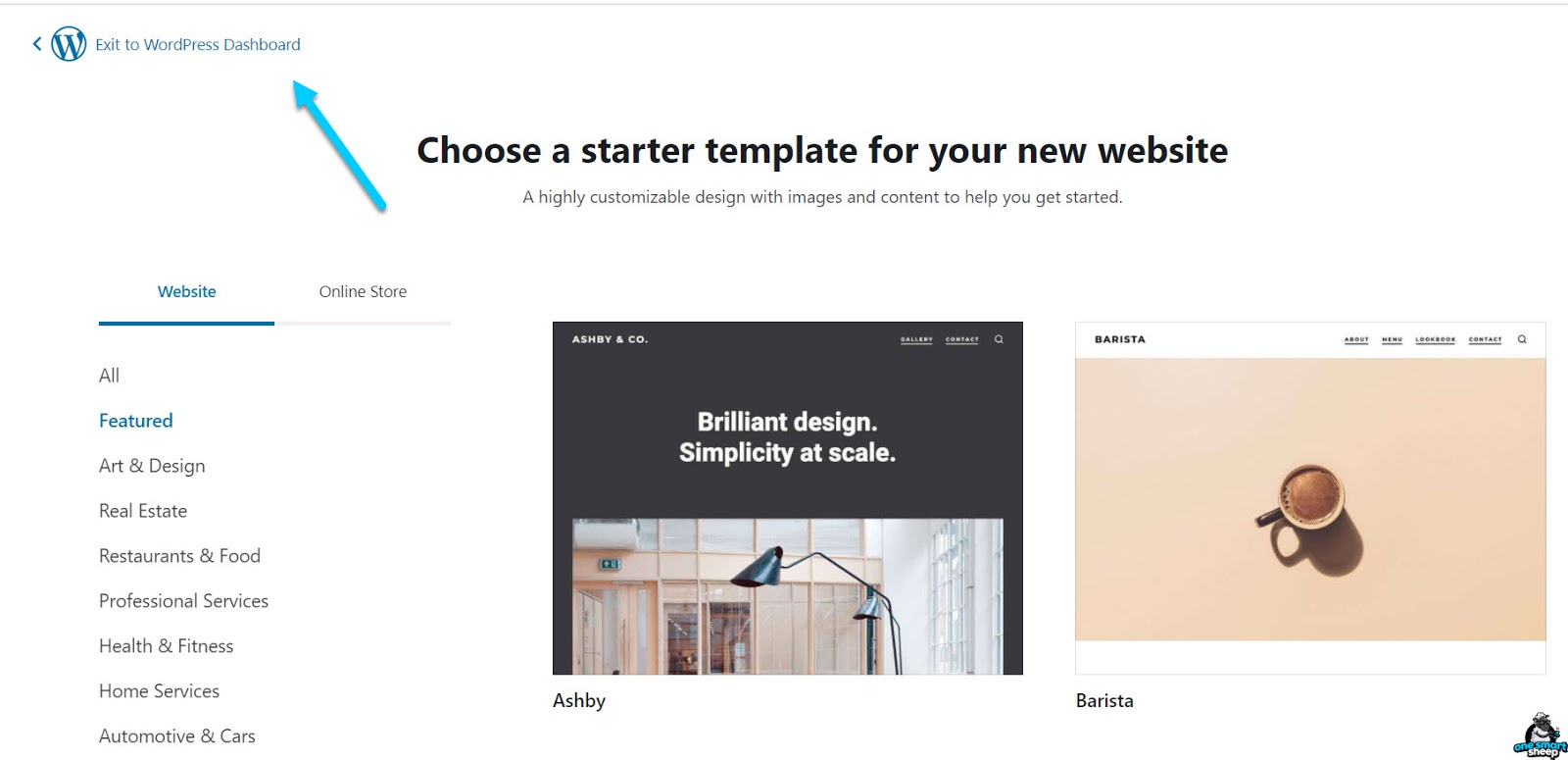
How to Install SSL for Free on GoDaddy WordPress
SSL (Secure Sockets Layer) is a standard security protocol for establishing encrypted links between a web server and a browser in online communication.
In other words, SSL creates a secure connection between a web server and a browser by allowing two-way data exchange and ensuring that all data passed between them remains private and secure. It doesn’t matter which plan you choose for GoDaddy; you can install SSL for free after you install WordPress on GoDaddy.
The best part? You get an SSL certificate that lasts 15 years.
Let’s get started.
Step 1 - Sign in to Cloudflare
We’ll use Cloudflare to generate an SSL certificate. Go to Cloudflare and create an account if you don’t already have one.
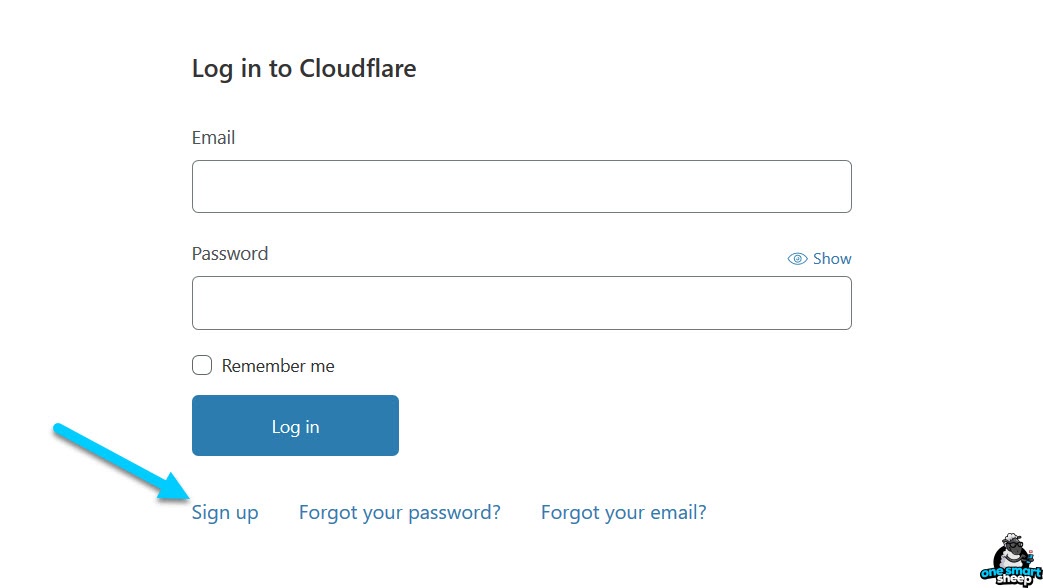
Step 2 - Add a New Site
After you have signed in successfully, click “+ Add a Site.”
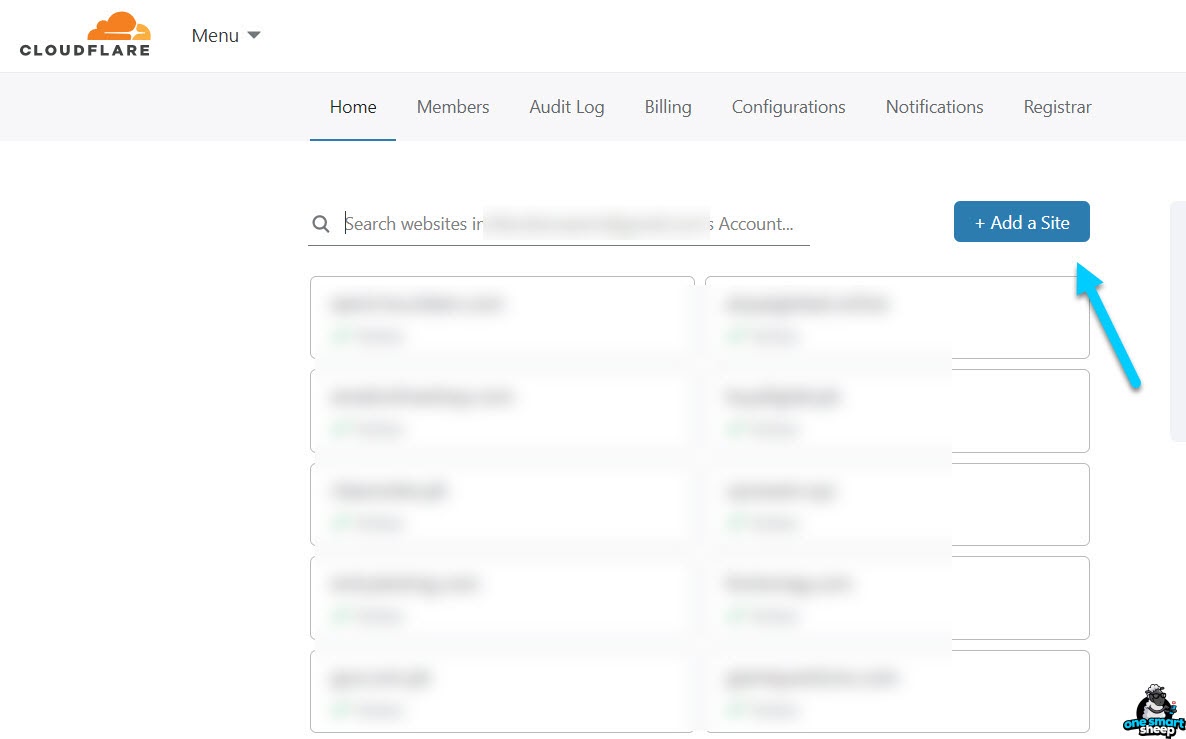
Step 3 - Enter Your Site Name
Type the website name where you want to install an SSL certificate.
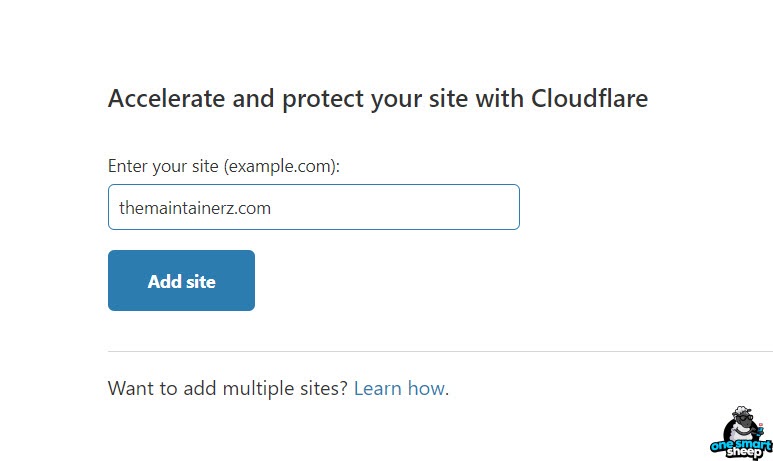
Step 4 - Select the Free Plan
You don’t need to purchase a paid plan; select the FREE plan.
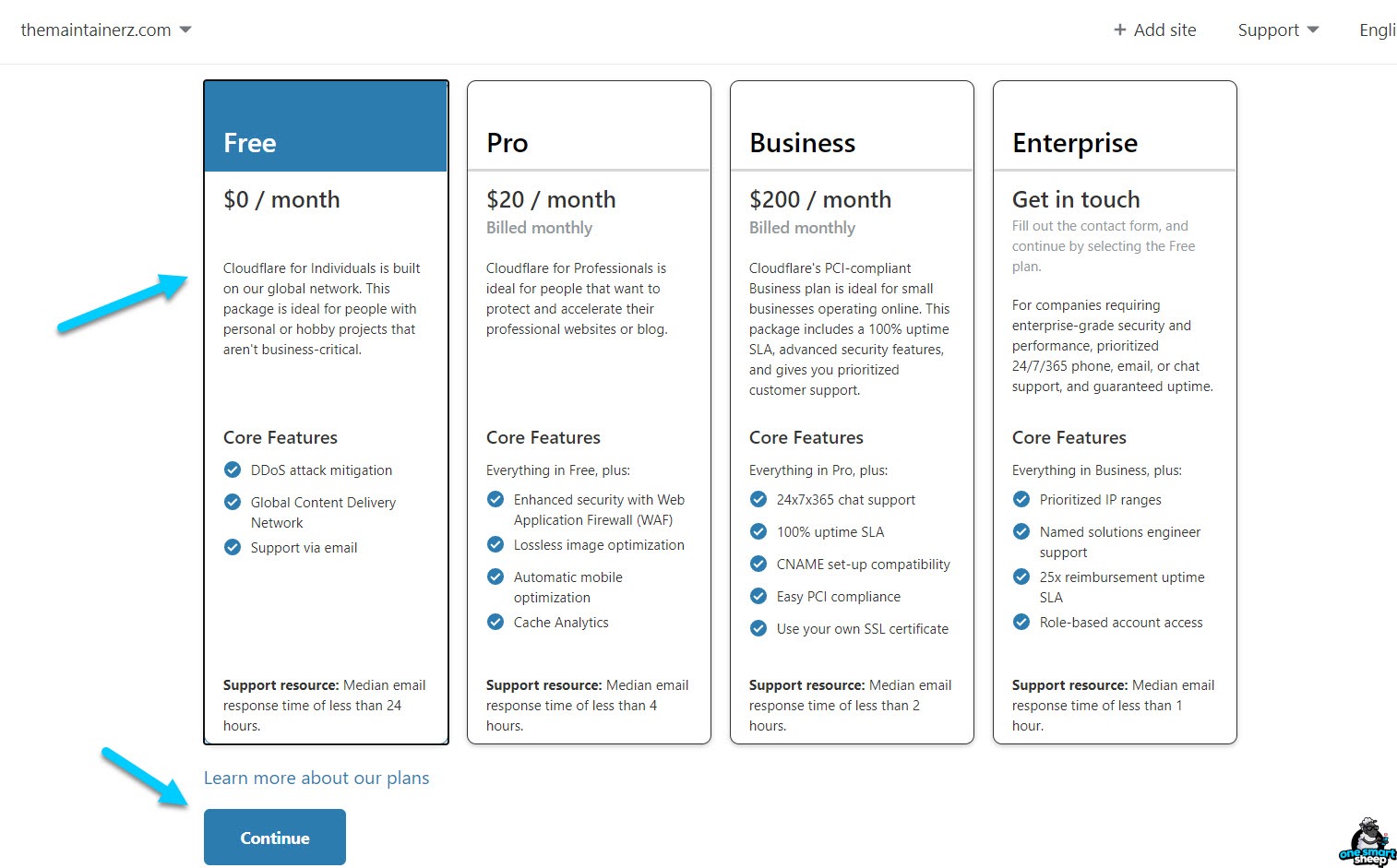
Step 5 - DNS Management
Overlook everything; click “Continue.”

Step 6 - Copy the Name Server
Cloudflare will provide you two unique name servers that you need to put into your name server section of your domain registrar.
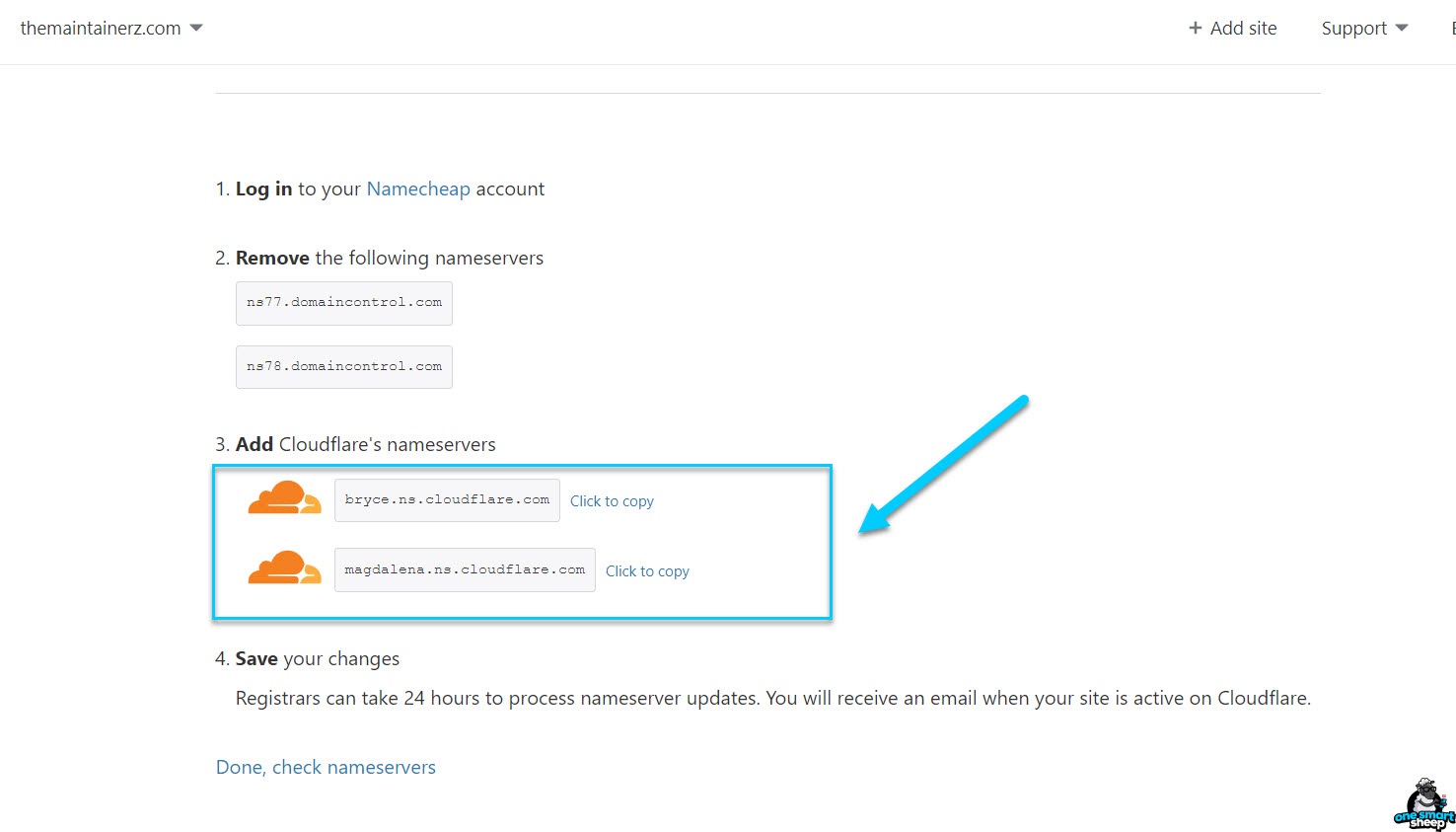
Step 7 - Copy Nameservers to Namecheap
If you use Namecheap for domain management, go to Domain and put Cloudflare’s nameservers, as shown in the screenshot below.
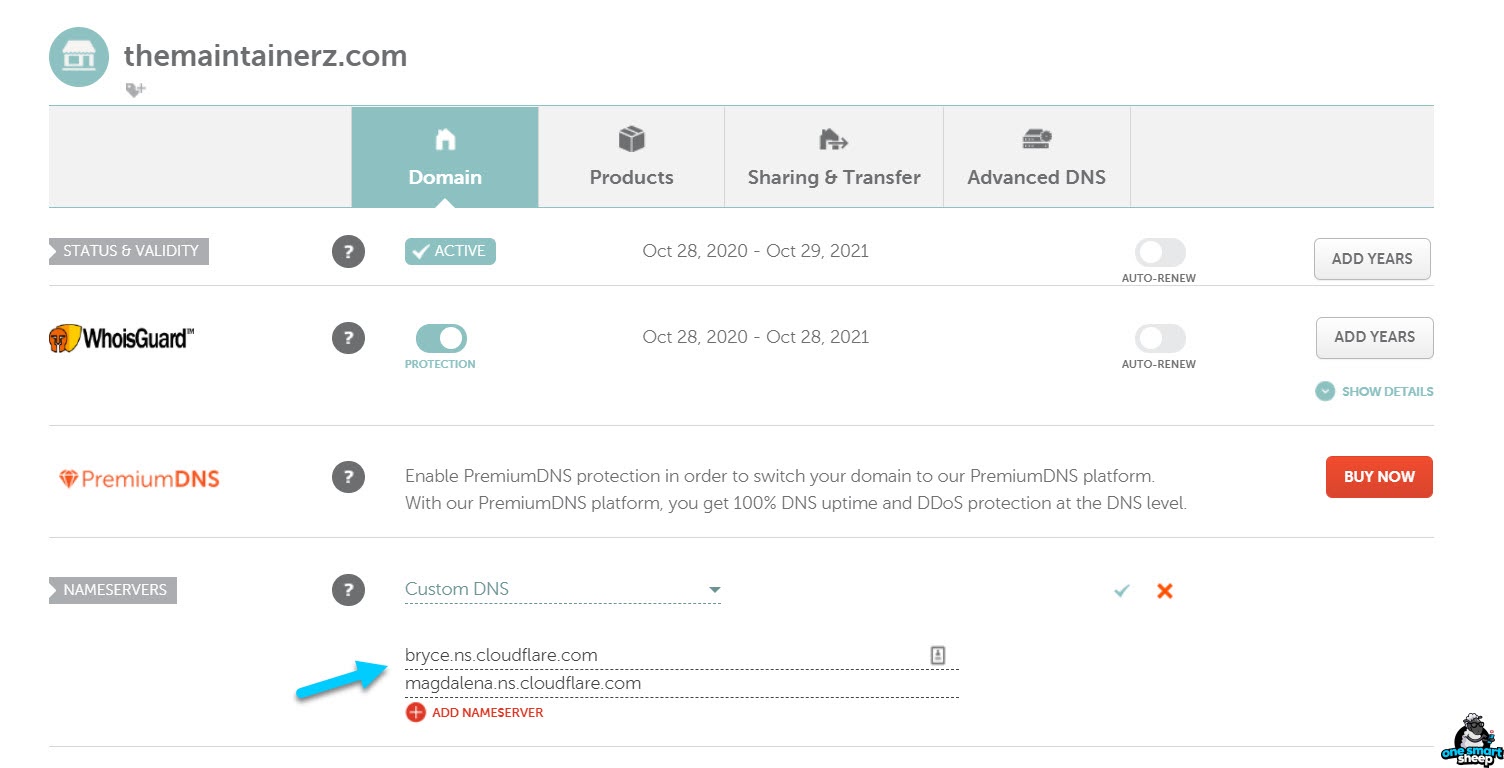
Step 8 - Done Check
Don’t forget to click Done, check nameservers
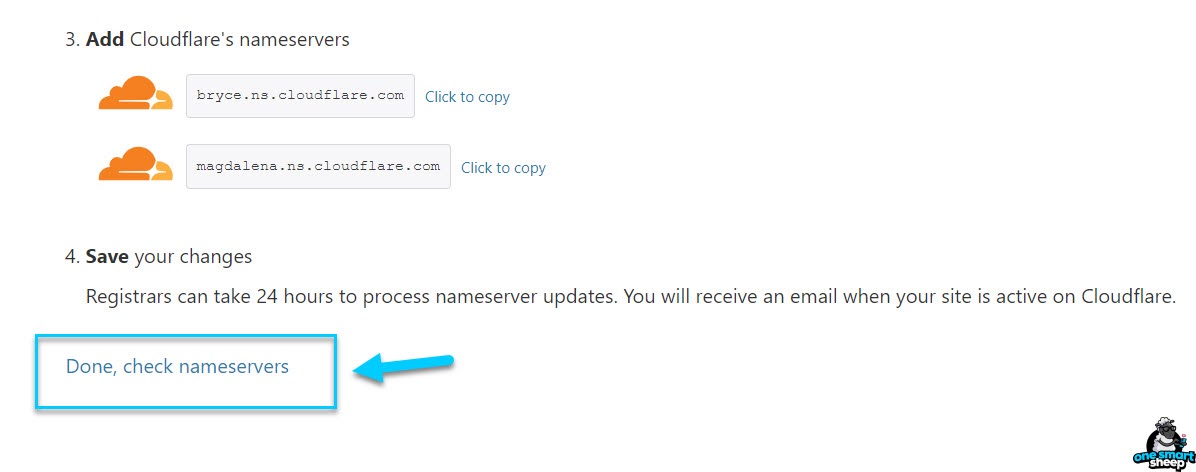
Step 9 - Step Guide
It’s recommended to use the below settings for your domain for smooth SSL installation.

Step 10 - Wait for DNS Propagation
Cloudflare activation doesn’t happen instantly.
You might need to wait from a few seconds to hours, depending on your country’s location and your domain registrar’s popularity.
Step 11 - Refresh
After the DNS propagation is completed, refresh your browser. Wait for the message "Great news! Cloudflare is now protecting your site."

Step 12 - Create Certificate
It's time to create a certificate. Go to the SSL/TLS section of Cloudflare and click Create Certificate.
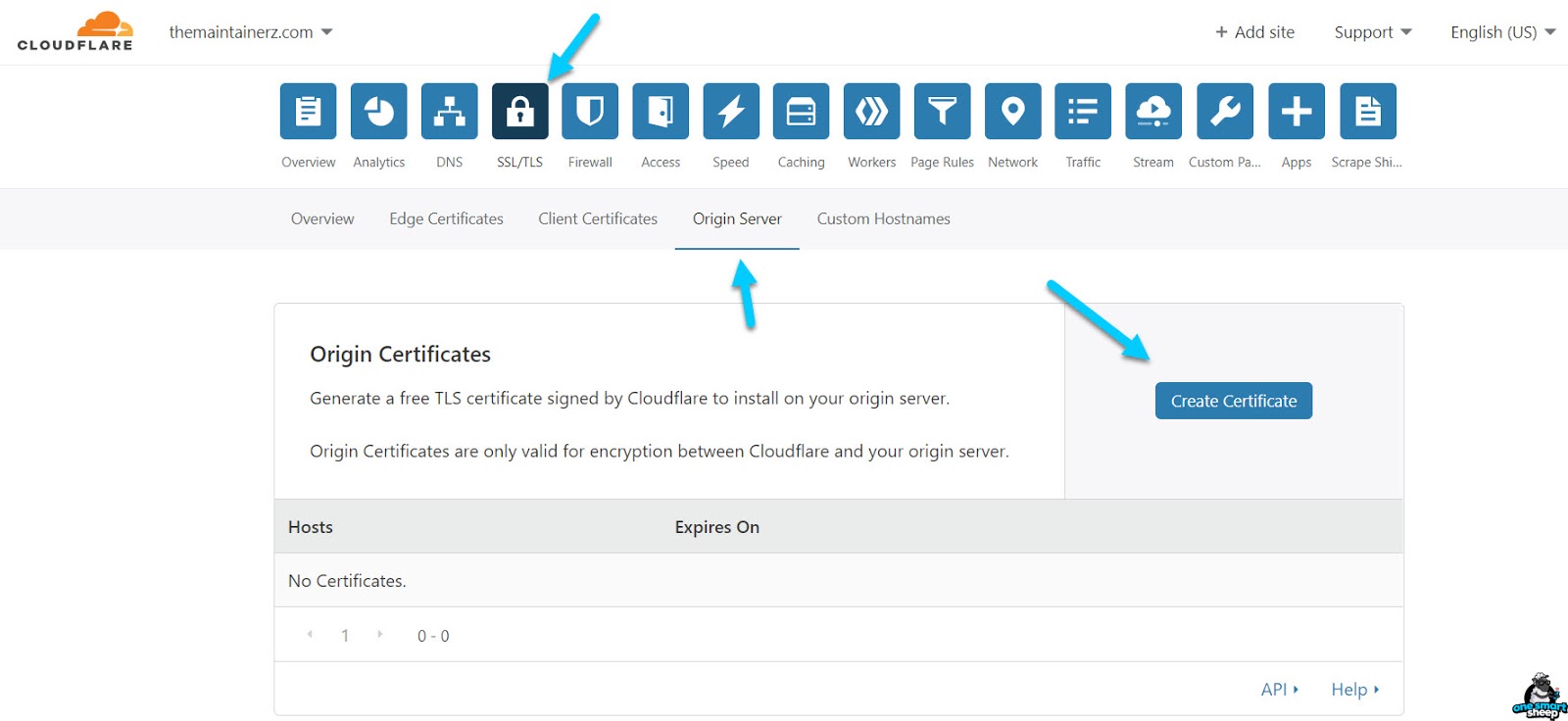
Step 13 - 15 Years of Free SSL
If you want to create an SSL for 15 years without any cost, select the following options:
- Private key type: RSA
- List the hostnames: automatically generated, don't write anything.
- Choose how long before your certificate expires: 15 years.

Step 14 - PEM
You should select your key format to be PEM. PEM stands for Privacy-Enhanced Mail is a file format for storing and sending cryptographic keys and certificates.

Step 15 - My Account > Manager
It’s time to go back to GoDaddy's My Account and click Manage.
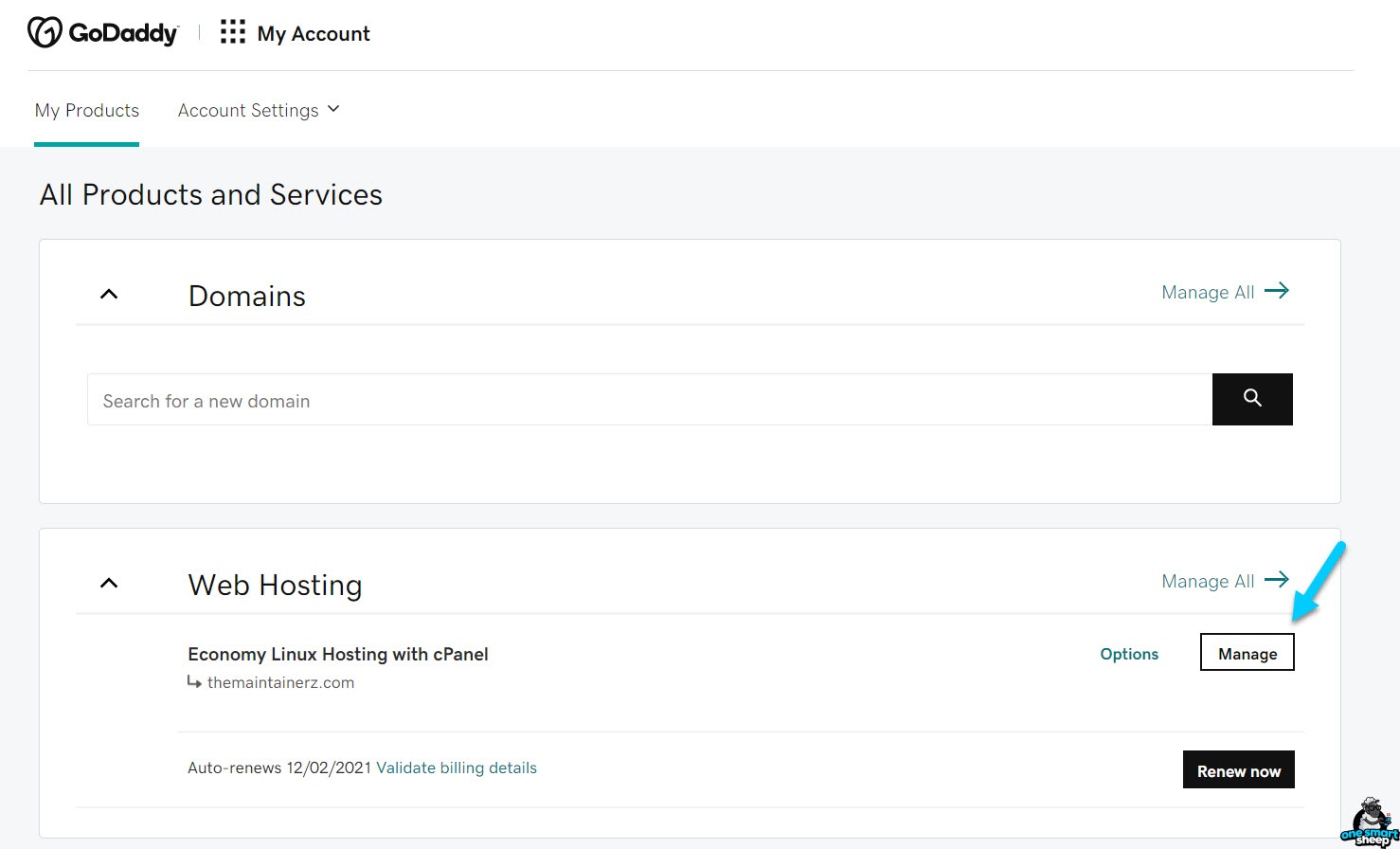
Step 16 - cPanel
Click the black button of "cPanel Admin" in order to open the gate for installing the SSL certificate.

Step 17 - SSL
Type the term SSL into the search box, and click SSL/TLS.

Step 18 - Manage SSL and HTTPS
Click “Manage SSL sites” under the heading "Install and Manage SSL for your site (HTTPS).”

Step 19 - SSL Copy and Pasting
Did you remember I talked about the PEM key? You need to copy and paste, as shown in the below screenshot.
It goes like this:
- Origin Certificate (Cloudflare) to Certificate (CRL) (Goddady’s Hosting)
- Private Key (Cloudflare) to Private Key (KEY) (Goddady’s Hosting)

Step 20 - Install Certificate
It's time to perform the most comfortable job; just click Install Certificate.
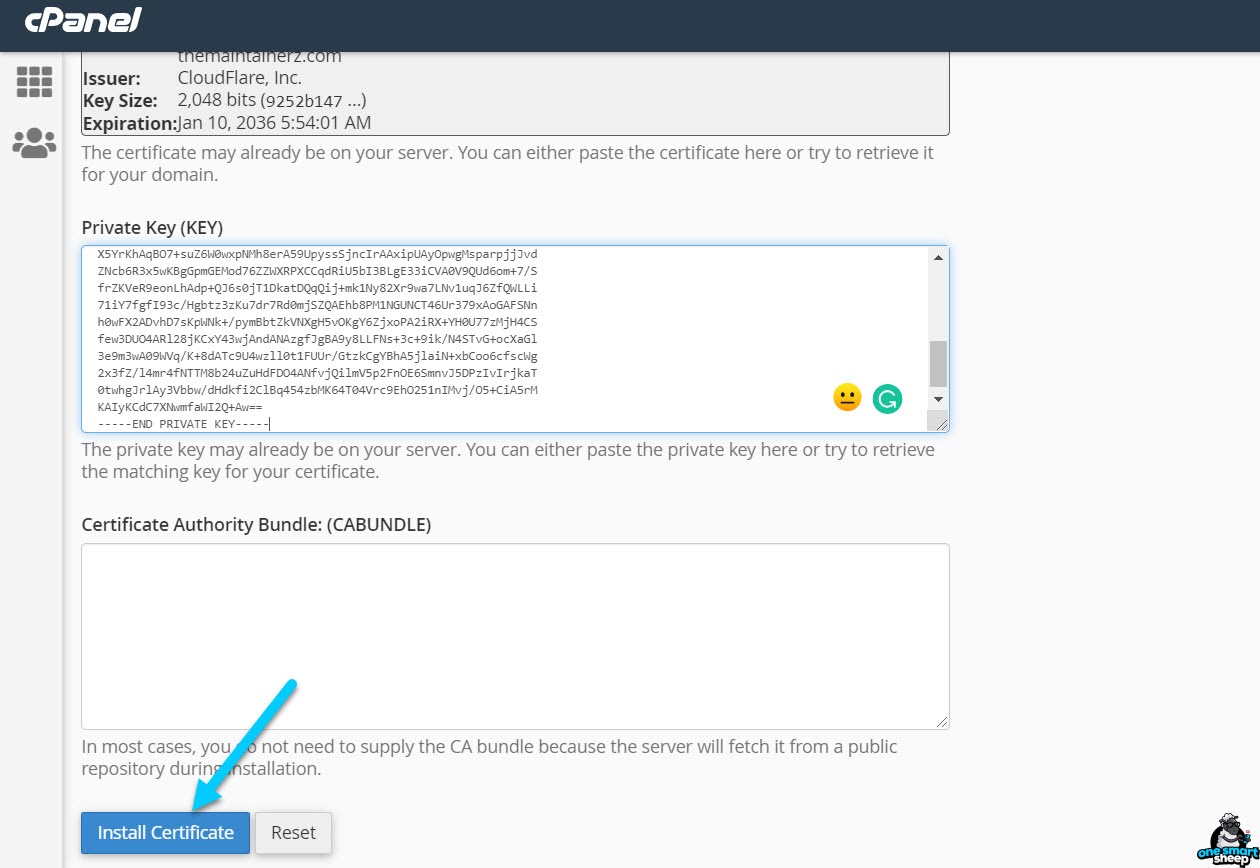
Step 21 - Successfully Installed
Within a few seconds, you'll see the message "SSL Certificate Successfully Updated."
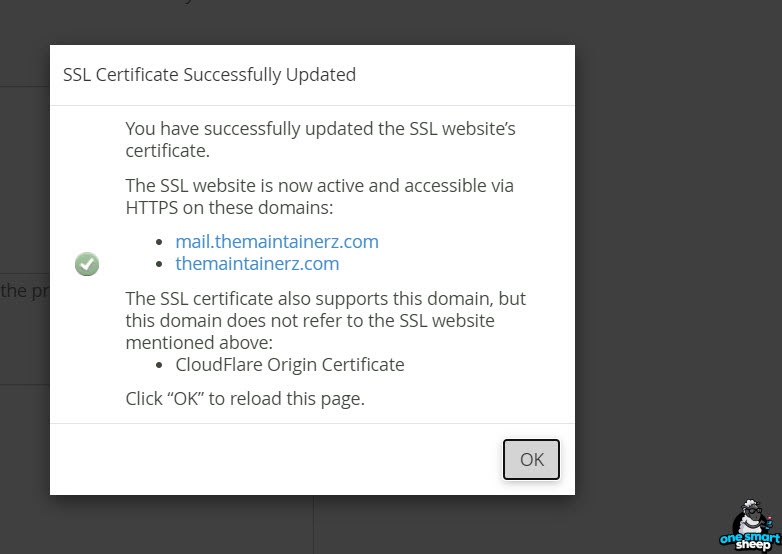
Step 22 - Strict SSL on Cloudflare
Now go back to Cloudflare > SSL/TLS > Overview and select Full (Strict). It helps Cloudflare to handle the SSL requests instead of GoDaddy.

Step 23 - Open your site.
Open your browser, type in the URL of your GoDaddy WordPress site, and you will see a green padlock at the top left corner of the website. This is an indication that your site has been secured with HTTPS protocol – Hyper Text Transfer Protocol Secure – provided by GoDaddy.

Please Note: GoDaddy uses SSL certificates to enable HTTPS connections on its WordPress sites. These certificates guarantee that all communication between web browsers and servers is encrypted, preventing malicious access to data in transit. The green padlock on your GoDaddy WordPress site indicates that all communication is safely encrypted within a secure connection monitored by GoDaddy’s servers 24/7.
Final Thoughts
We hope this guide was helpful for you in setting up your website on GoDaddy. If you have any questions or run into any problems, please don’t hesitate to reach out to us.
We are more than happy to help! And be sure to check back often as we will continue updating this guide with the latest information about how to install WordPress on GoDaddy. Happy New Year and good luck with your website!
Still, have a question? You're to ask any questions below; I promise each and everyone will get a reply from me.
FAQs
How to Install Wordpress on Godaddy?
To install WordPress on GoDaddy, you can follow these simple steps:
- Log in to your GoDaddy account and navigate to the "My Products" page.
- Click on "Manage" next to your hosting plan.
- In the hosting control panel, find the "WordPress" or "Application Installer" option.
- Click on the WordPress installer and select your domain.
- Fill in the required information, such as your admin username and password.
- Click "Install" and wait for the installation to complete.
- Once the installation is finished, you can access your new WordPress site by visiting your domain.
Is Adding wordpress to godaddy a straightforward process?
Adding WordPress on your GoDaddy hosting account is a straightforward process. Simply log in to your GoDaddy account, navigate to your hosting control panel, and look for the WordPress installer or the "Application Installer" option. Click on the installer, select your domain, and fill in the required information, such as your admin username and password. Once you've completed these steps, click "Install" and wait for the installation to finish. After the installation is complete, you can access your new WordPress site by visiting your domain.
Is it possible to reinstall wordpress godaddy?
Yes, it is possible to reinstall WordPress on your GoDaddy hosting account. If you encounter issues with your existing WordPress installation or want to start fresh.
How to set up wordpress on godaddy?
To set up WordPress on GoDaddy, start by purchasing a hosting plan on GoDaddy’s website and logging into your account. Navigate to your product page, select 'Web Hosting,' and click 'Manage.' Use the 'one-click' WordPress installation feature by clicking on the WordPress icon and following the setup prompts. Choose a domain for your WordPress site from your registered domains, and during the installation, provide a username, password, and email for your WordPress admin account. After completing these steps, the installation will finish automatically. You can then access your new WordPress site by adding '/wp-admin' to your domain URL and logging in with your new credentials.
Can I switch from GoDaddy to WordPress?
Yes, you can switch from GoDaddy's website builder to WordPress. You'll need to install WordPress on your GoDaddy hosting account or transfer your domain to a WordPress-friendly host.
Does GoDaddy back up my WordPress site?
GoDaddy offers backup solutions for WordPress sites through its paid add-ons or hosting plans that include backup features. You should enable and set up these options within your GoDaddy account.
How do I install WordPress after buying a domain?
After buying a domain, choose a hosting provider that supports WordPress, then use their one-click installation feature or manually install WordPress by downloading it from WordPress.org and following the installation instructions.
How do I install WordPress on an existing domain?
To install WordPress on an existing domain, access your hosting control panel, select the WordPress installer, and follow the instructions. If your host doesn't have an installer, you can manually upload WordPress files via FTP and create a database for your WordPress install.
















.svg)
.svg)
.svg)

